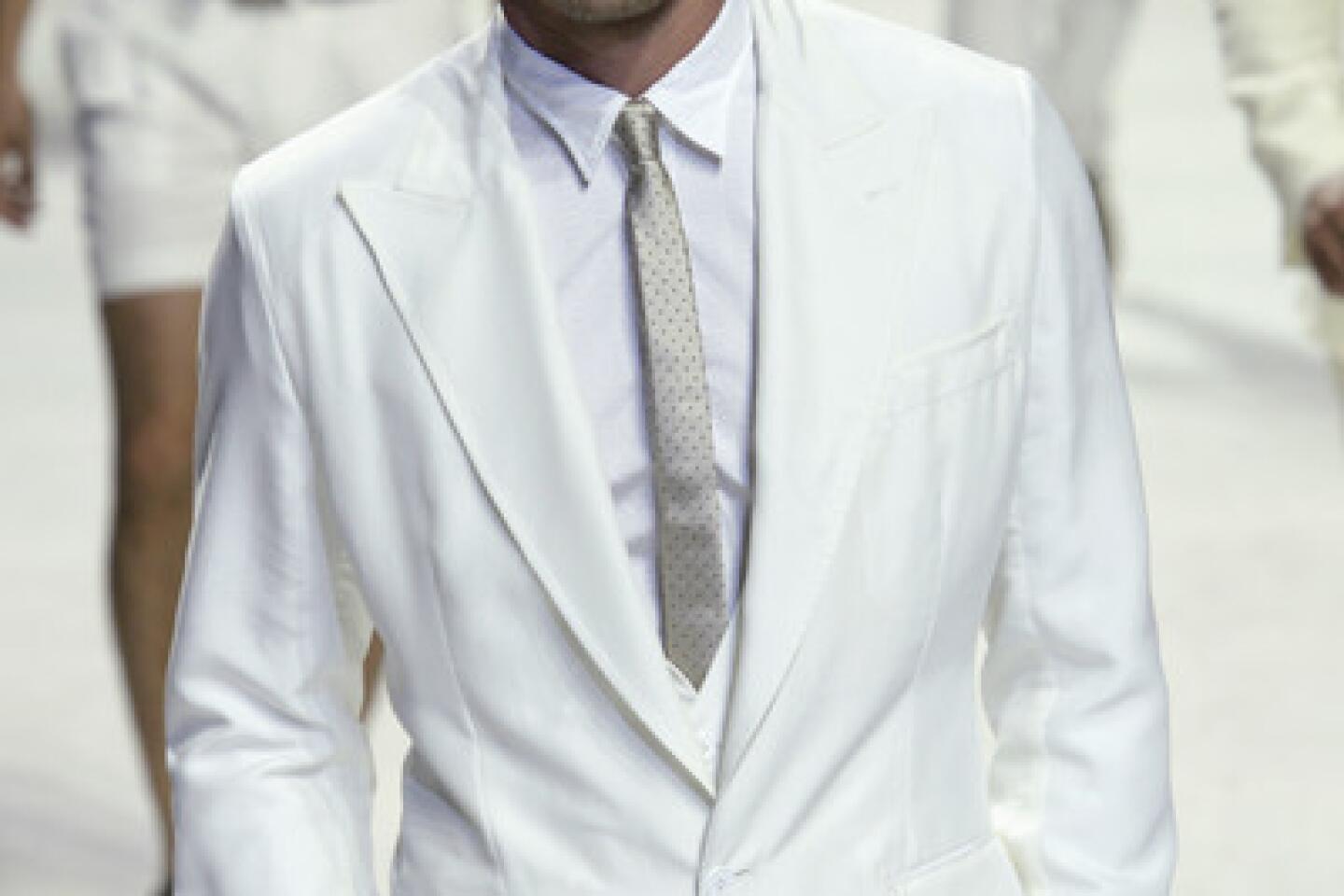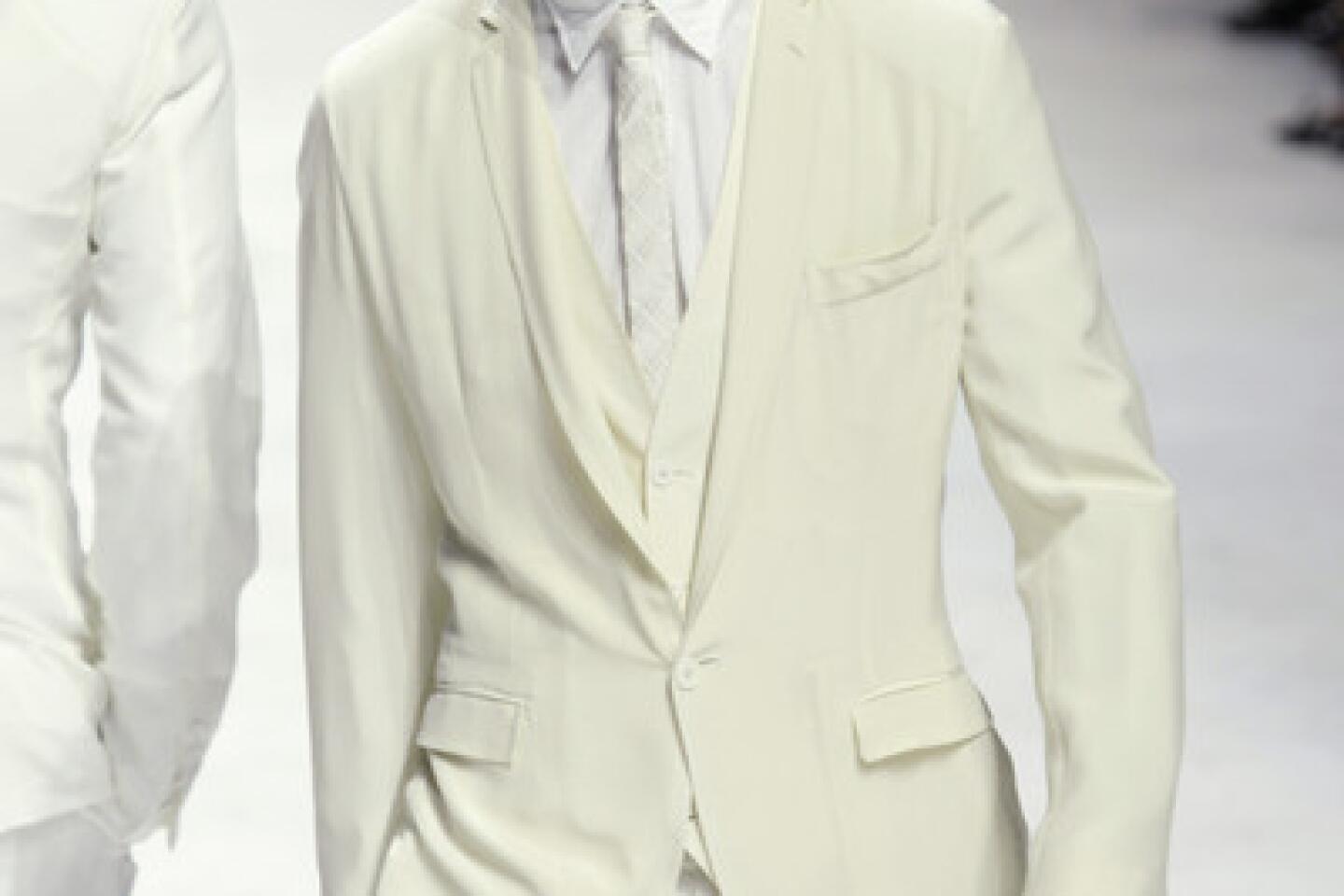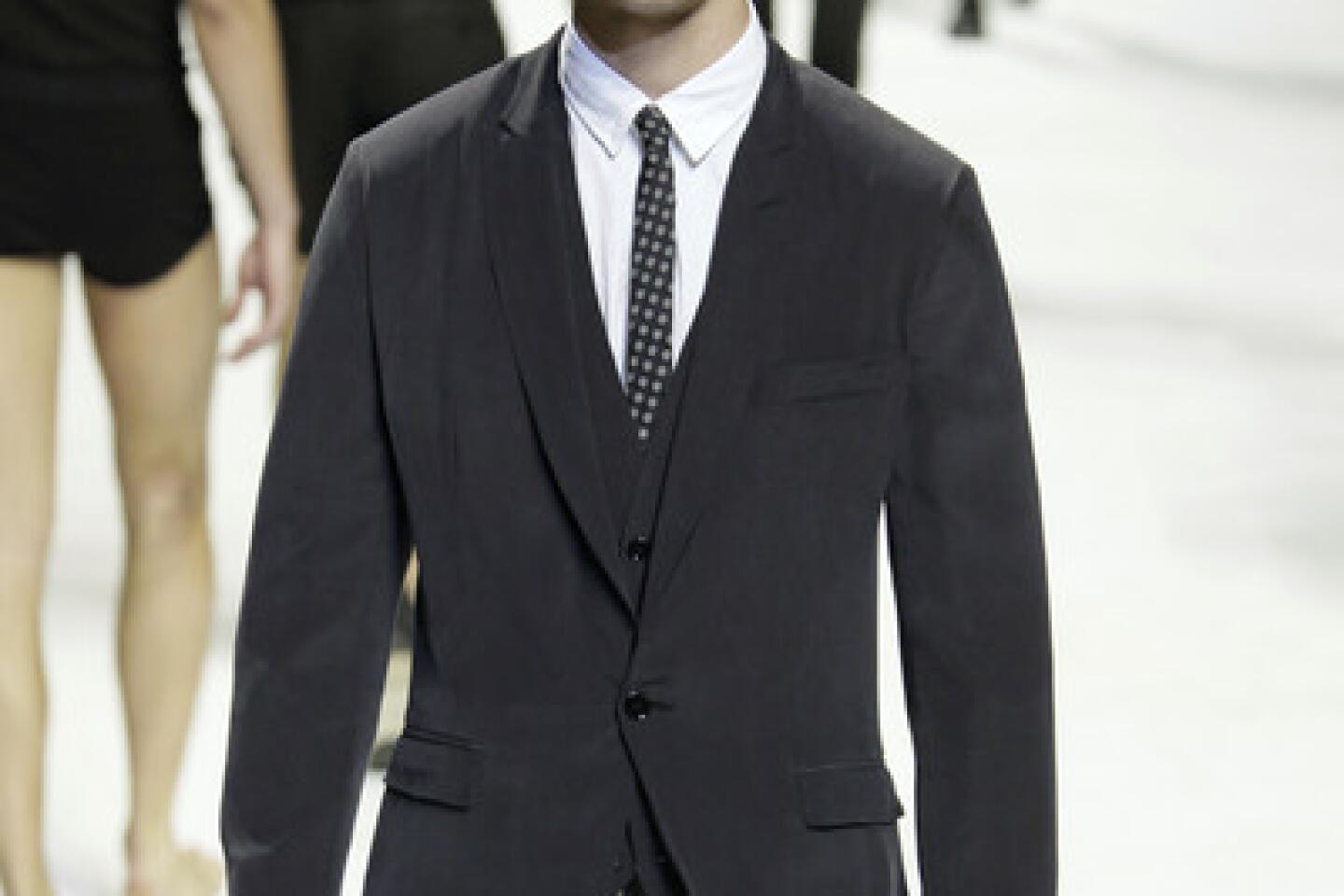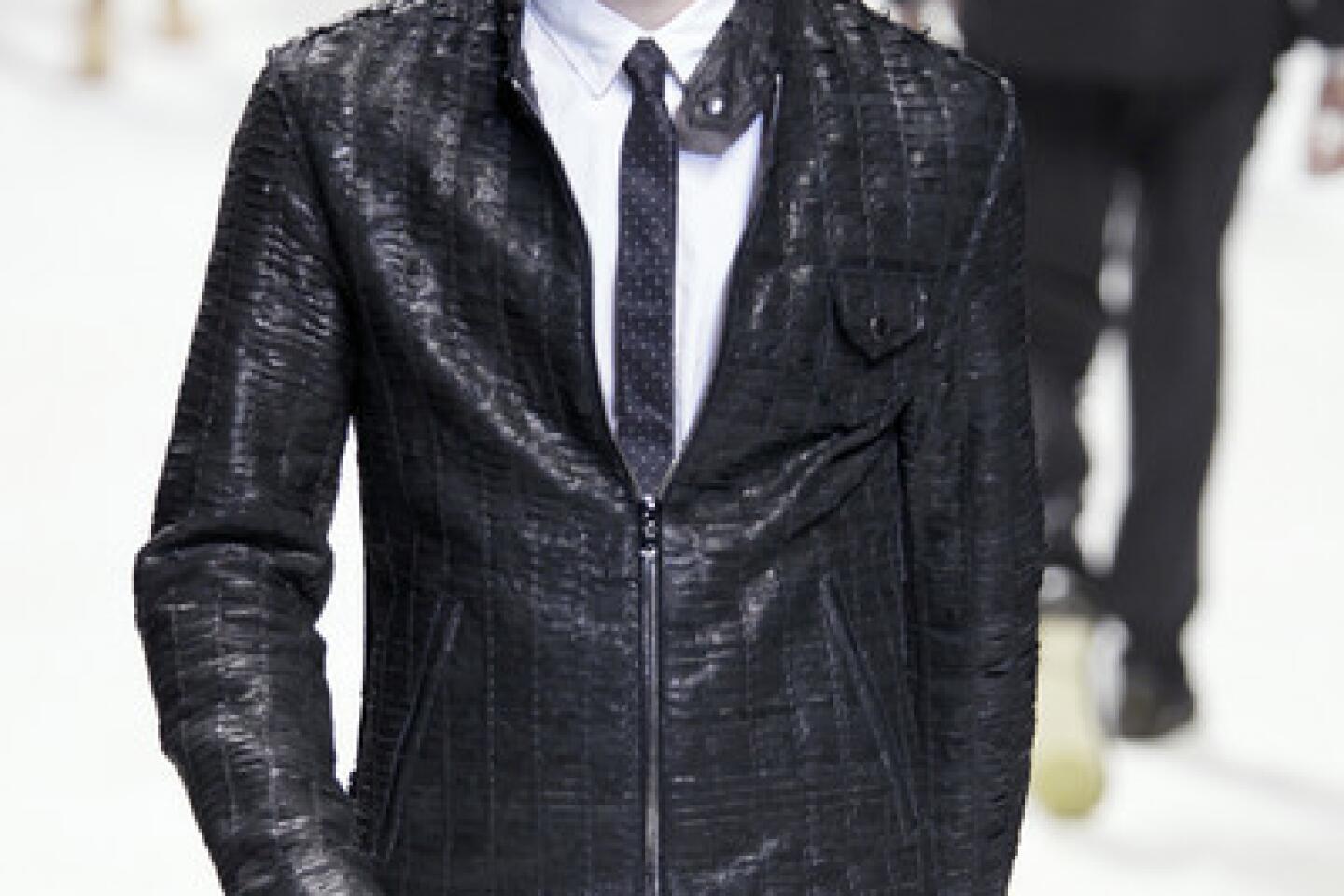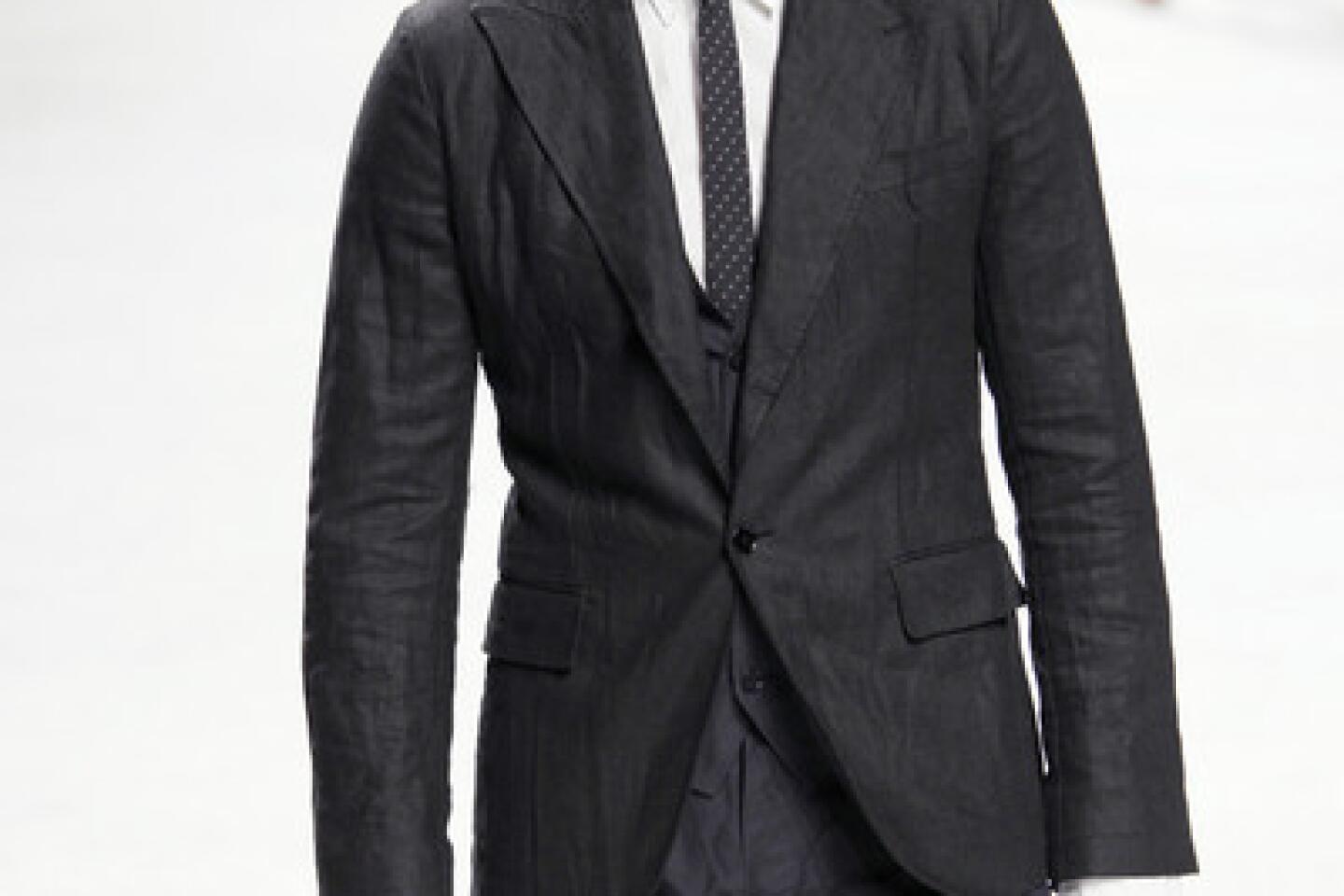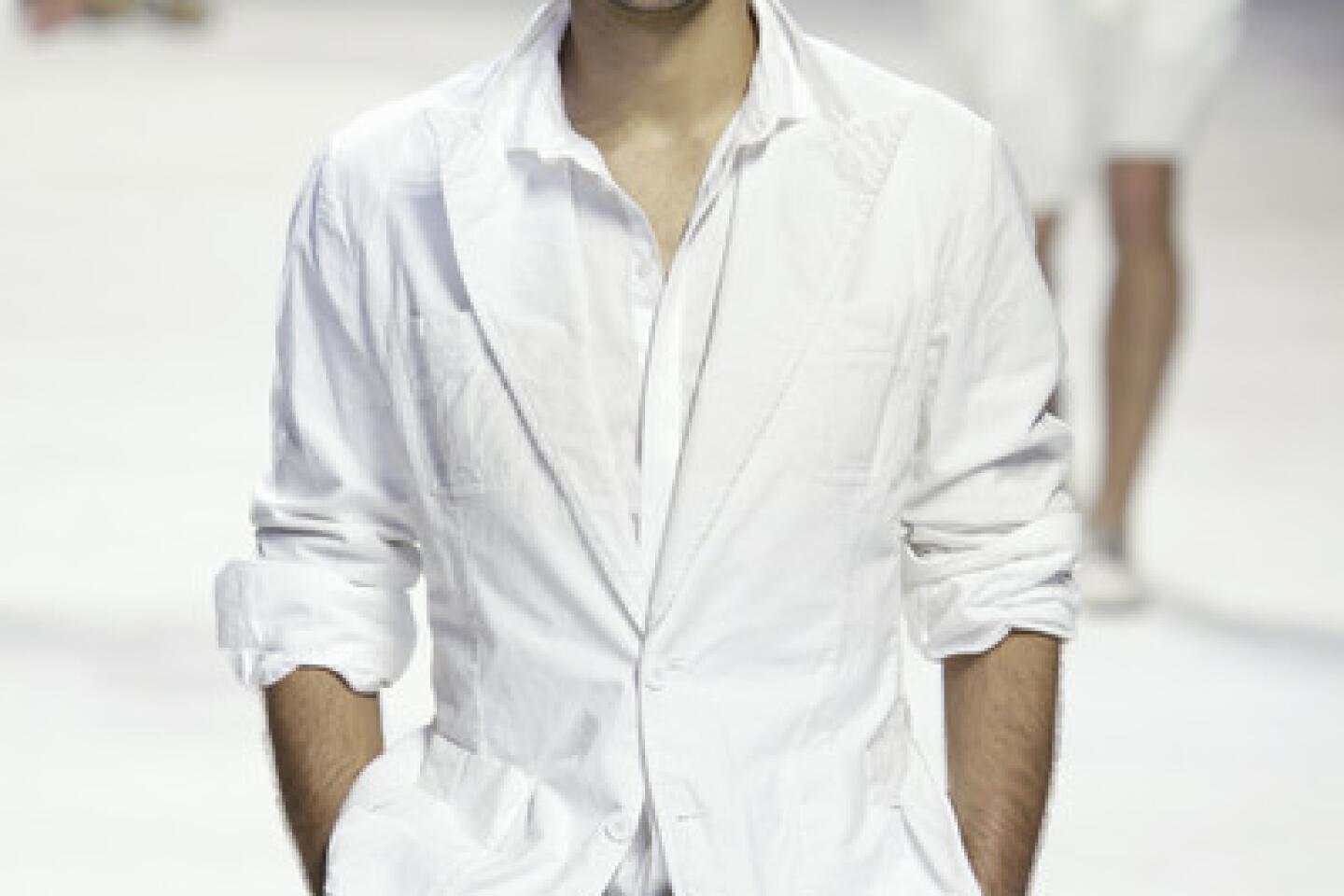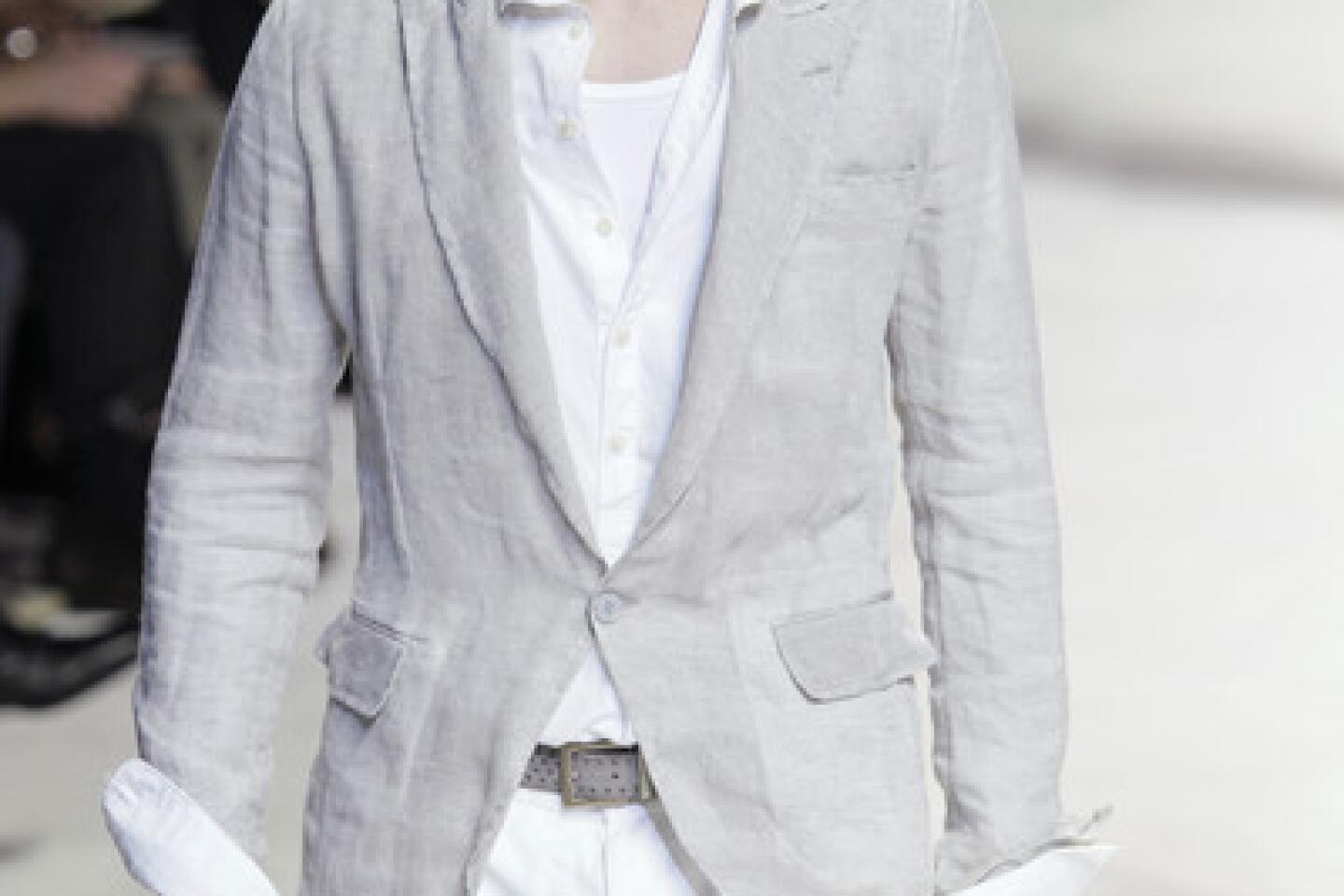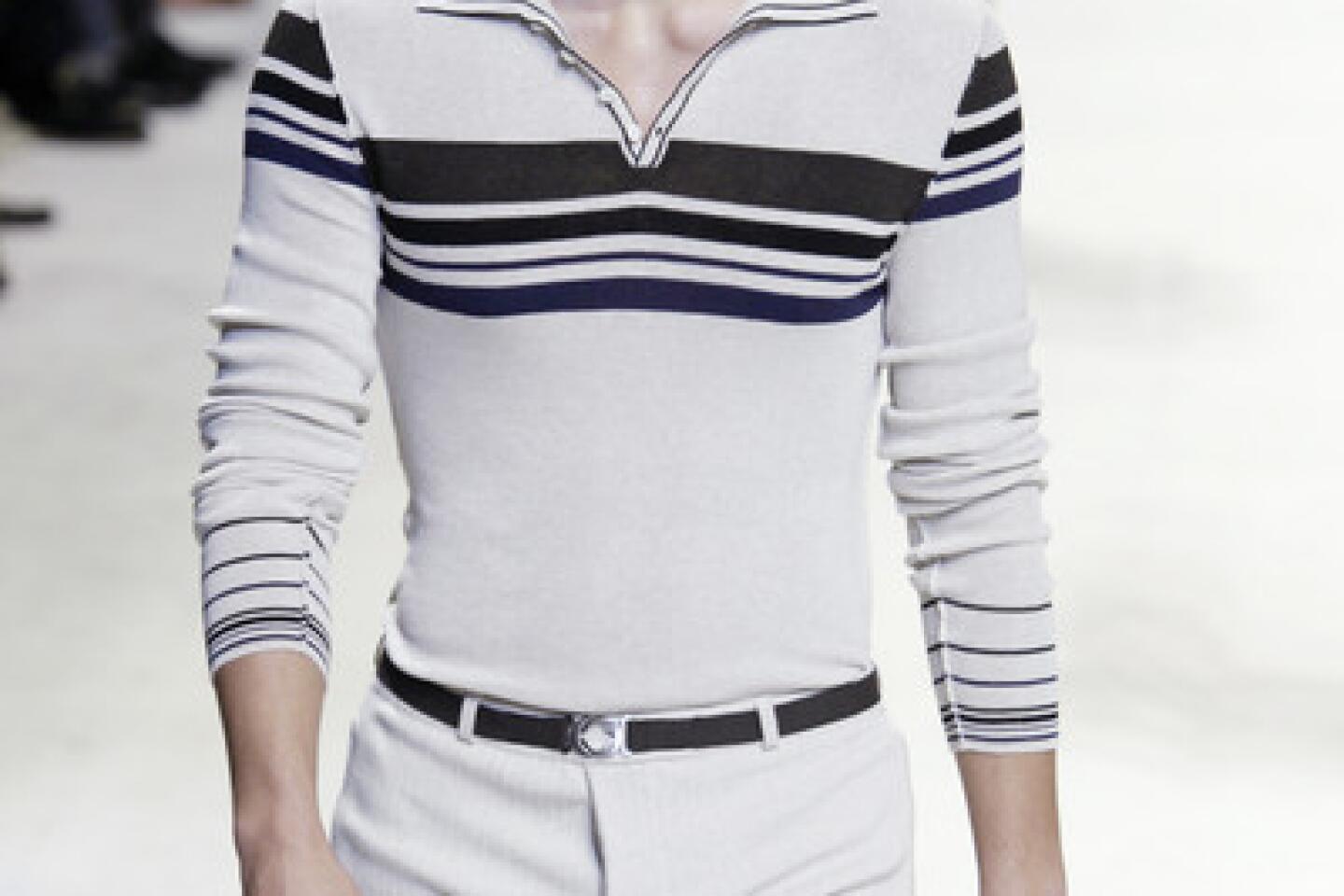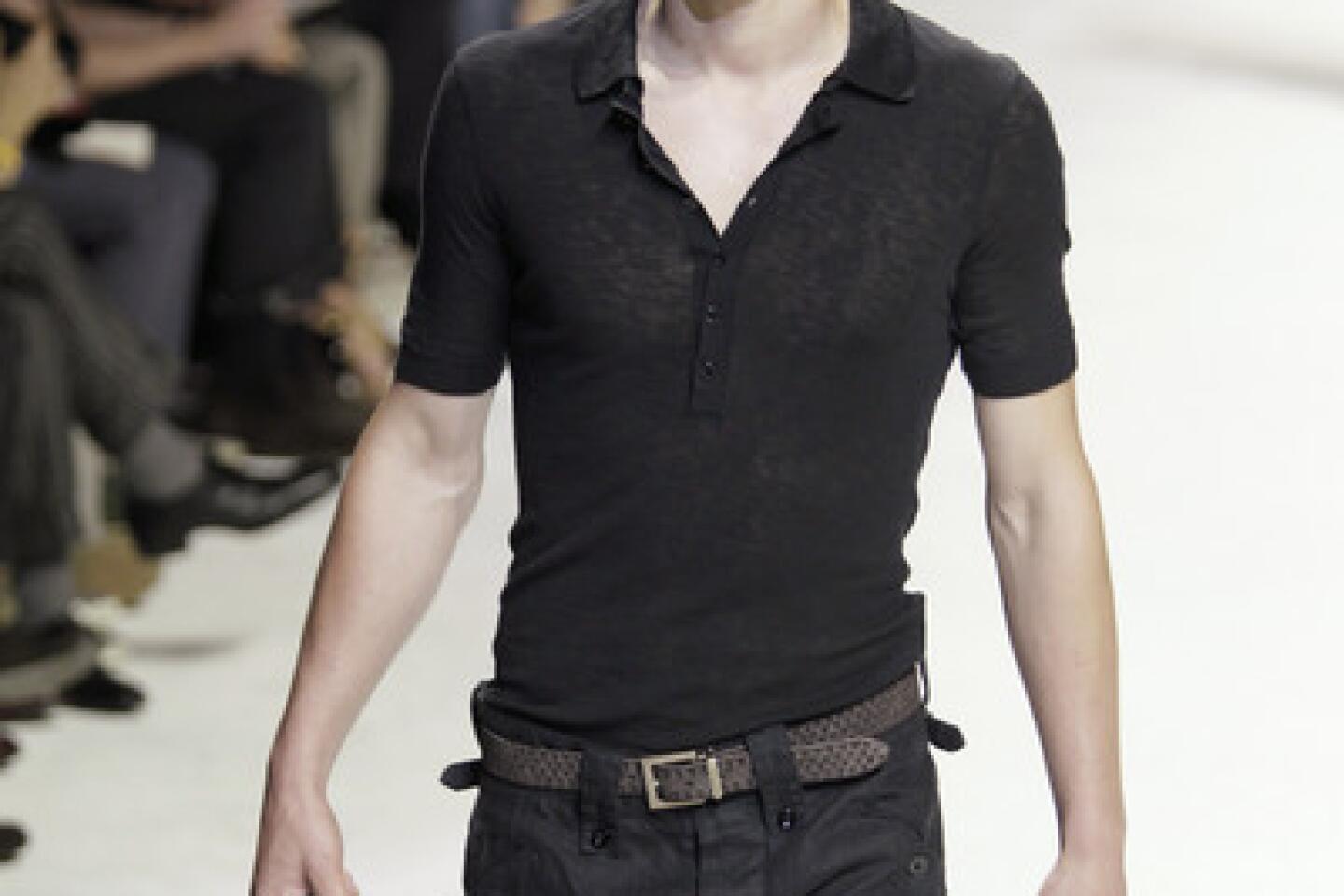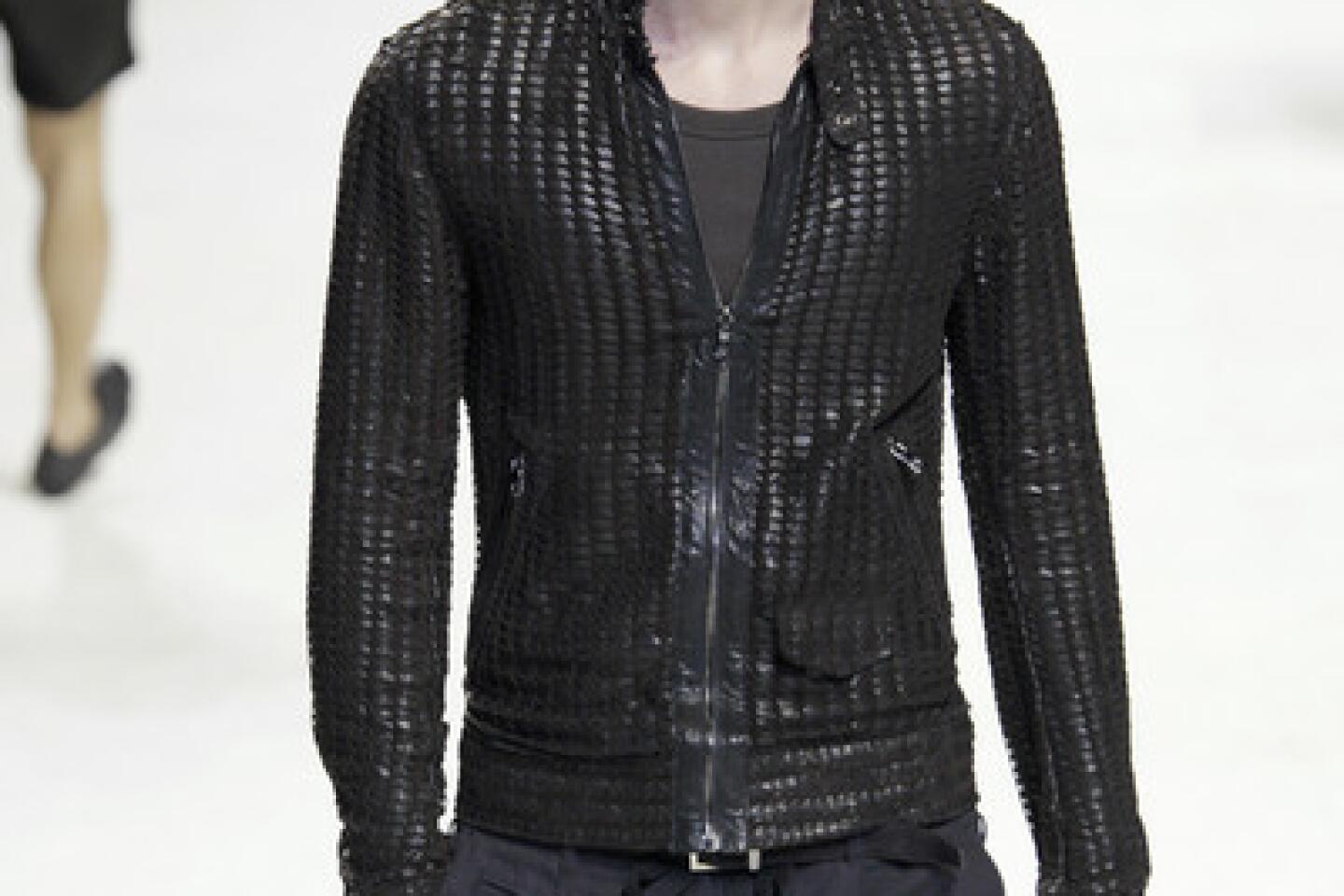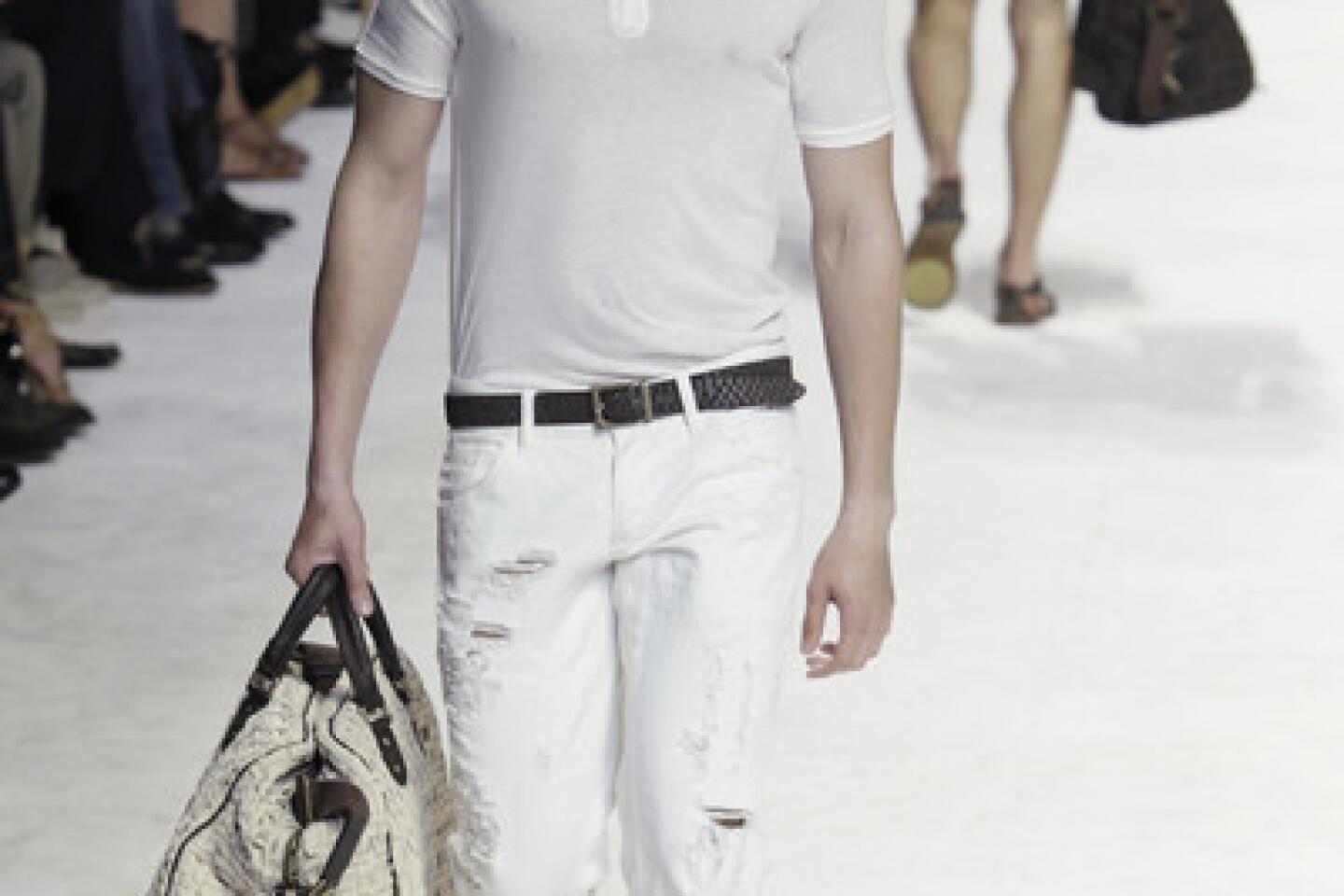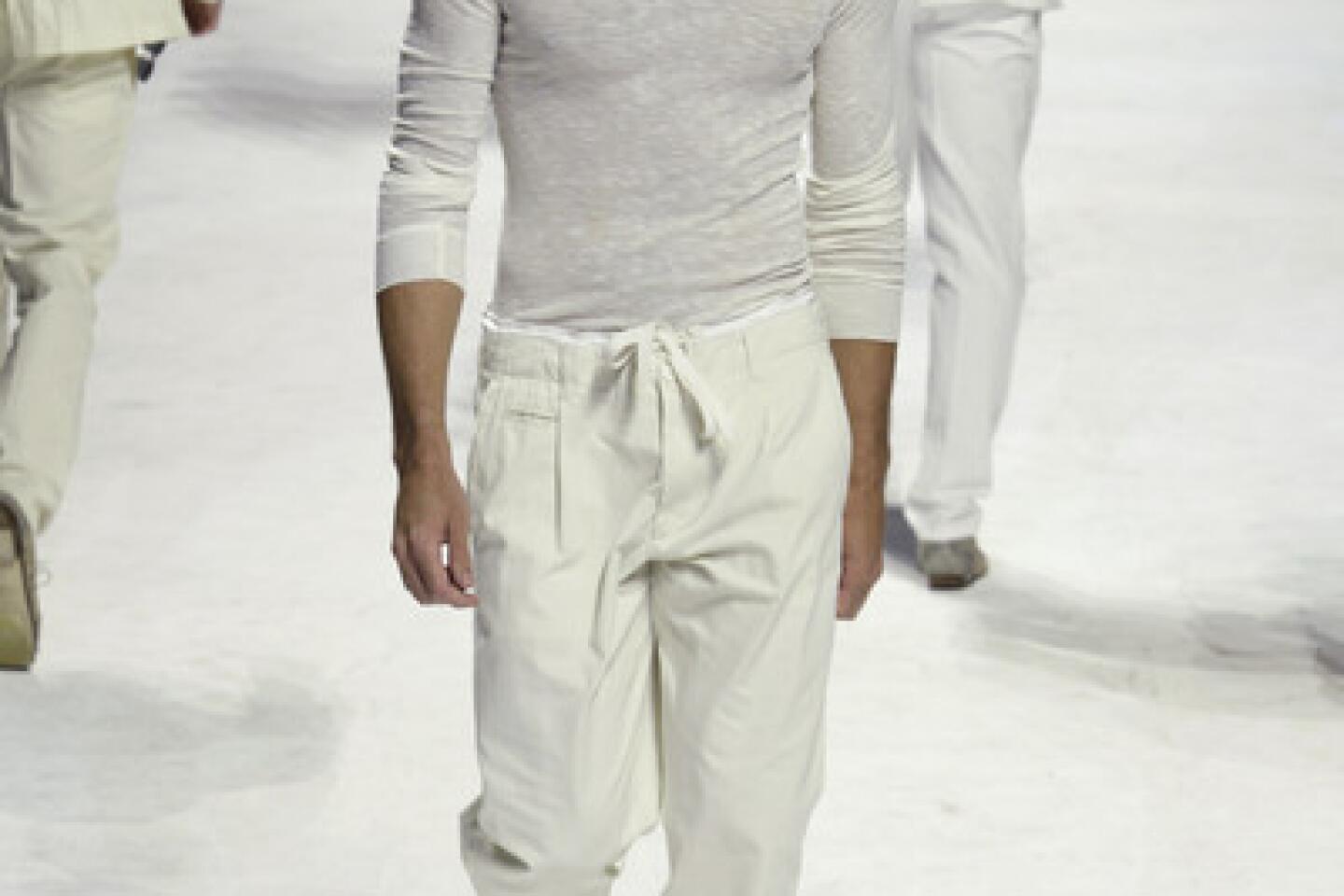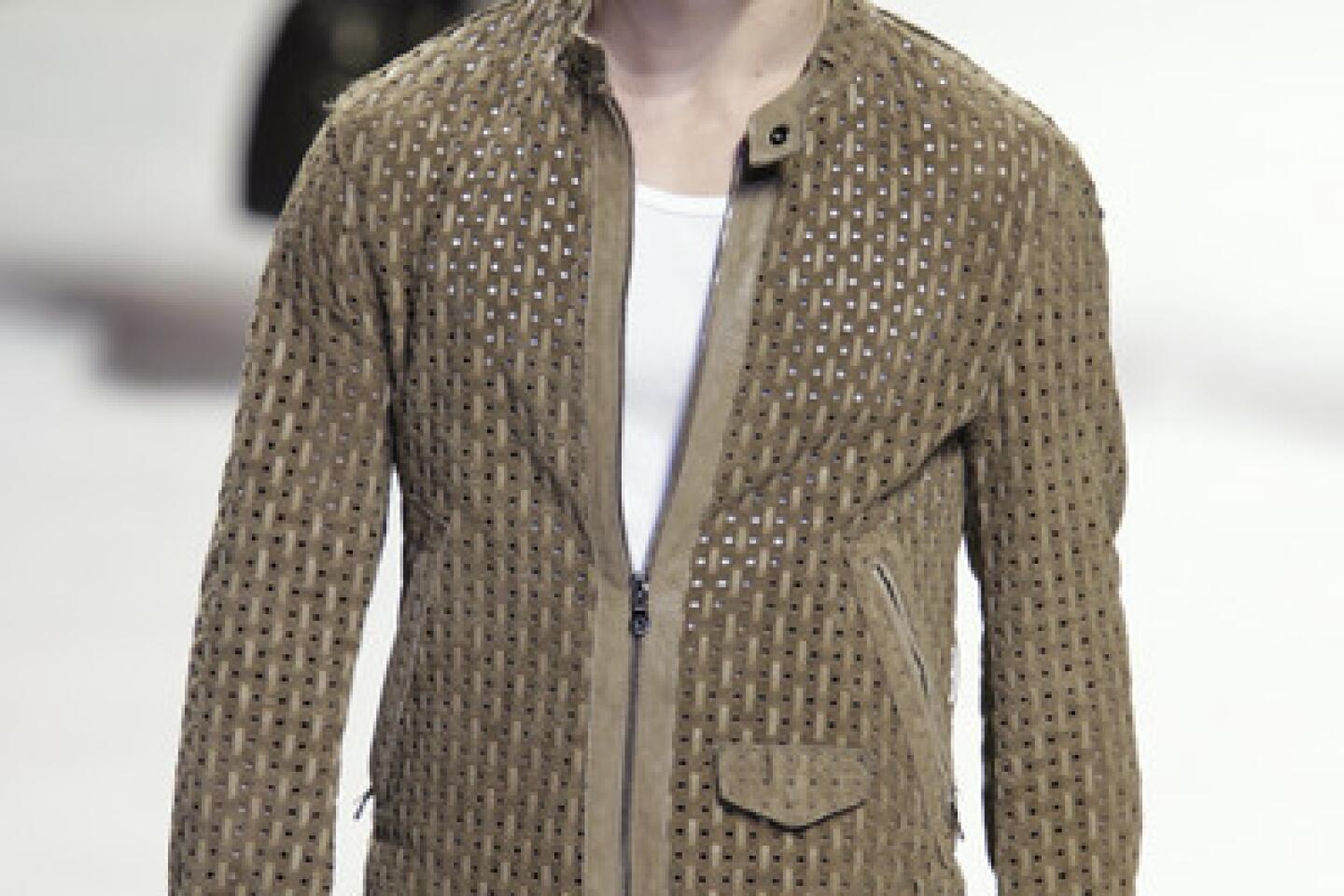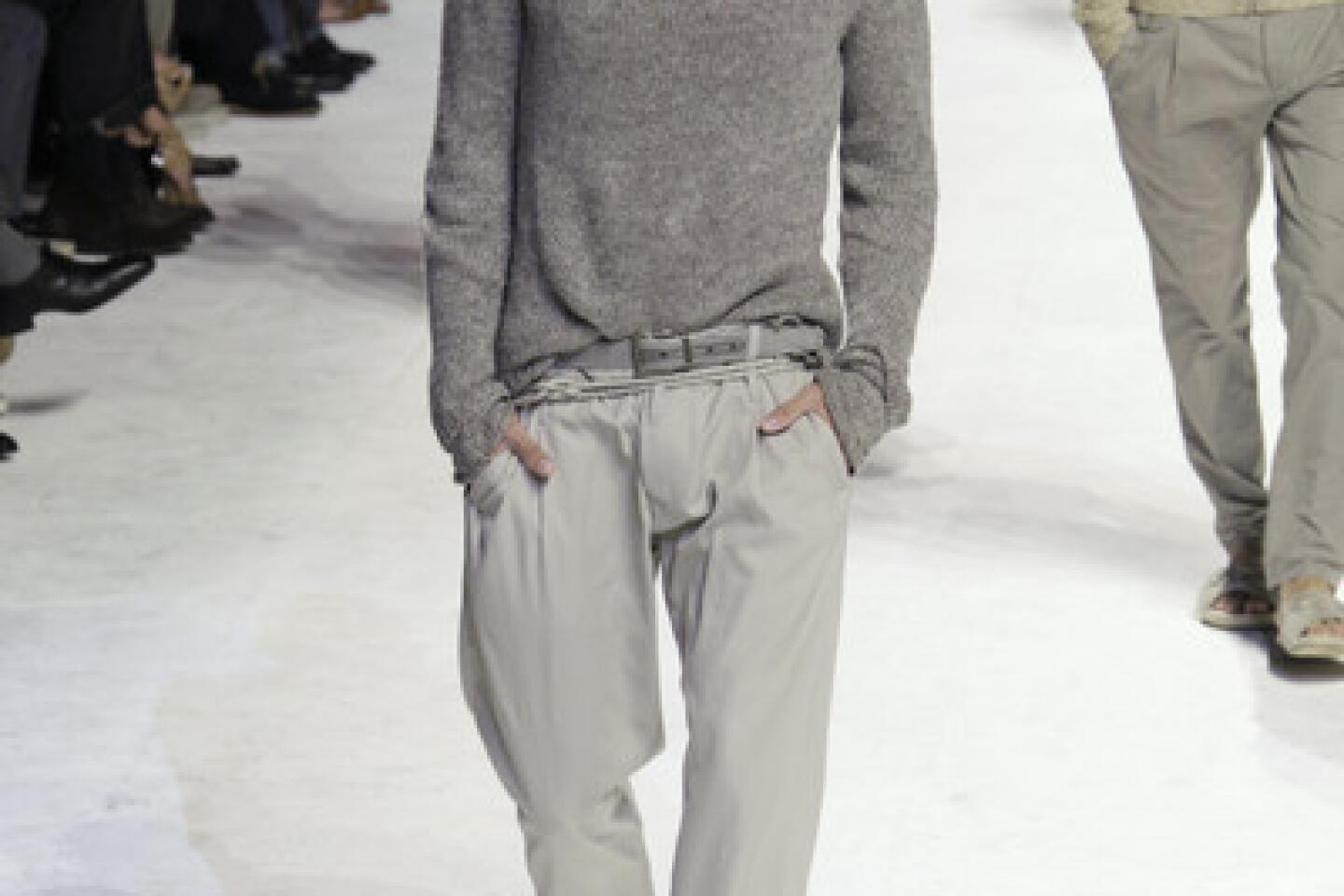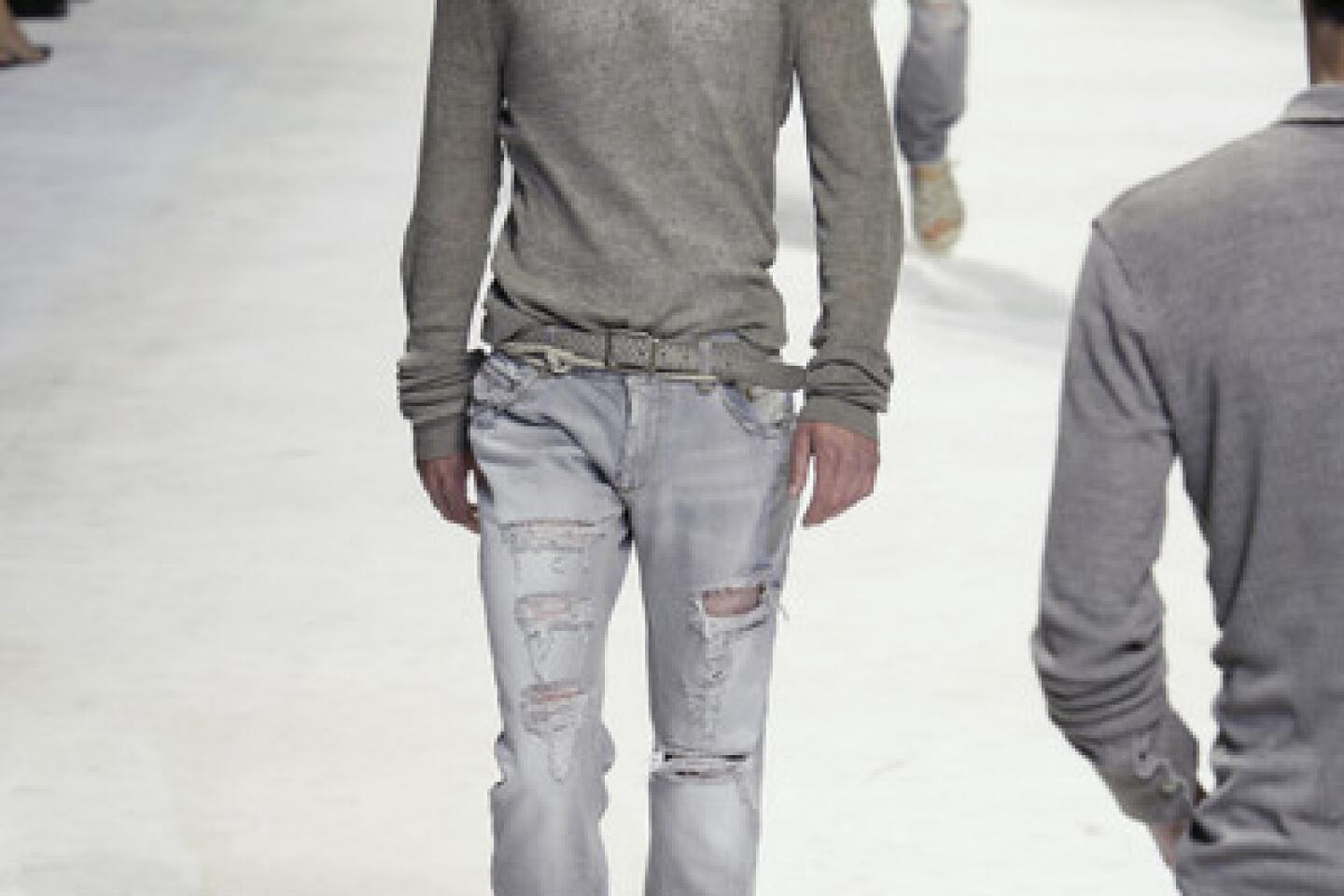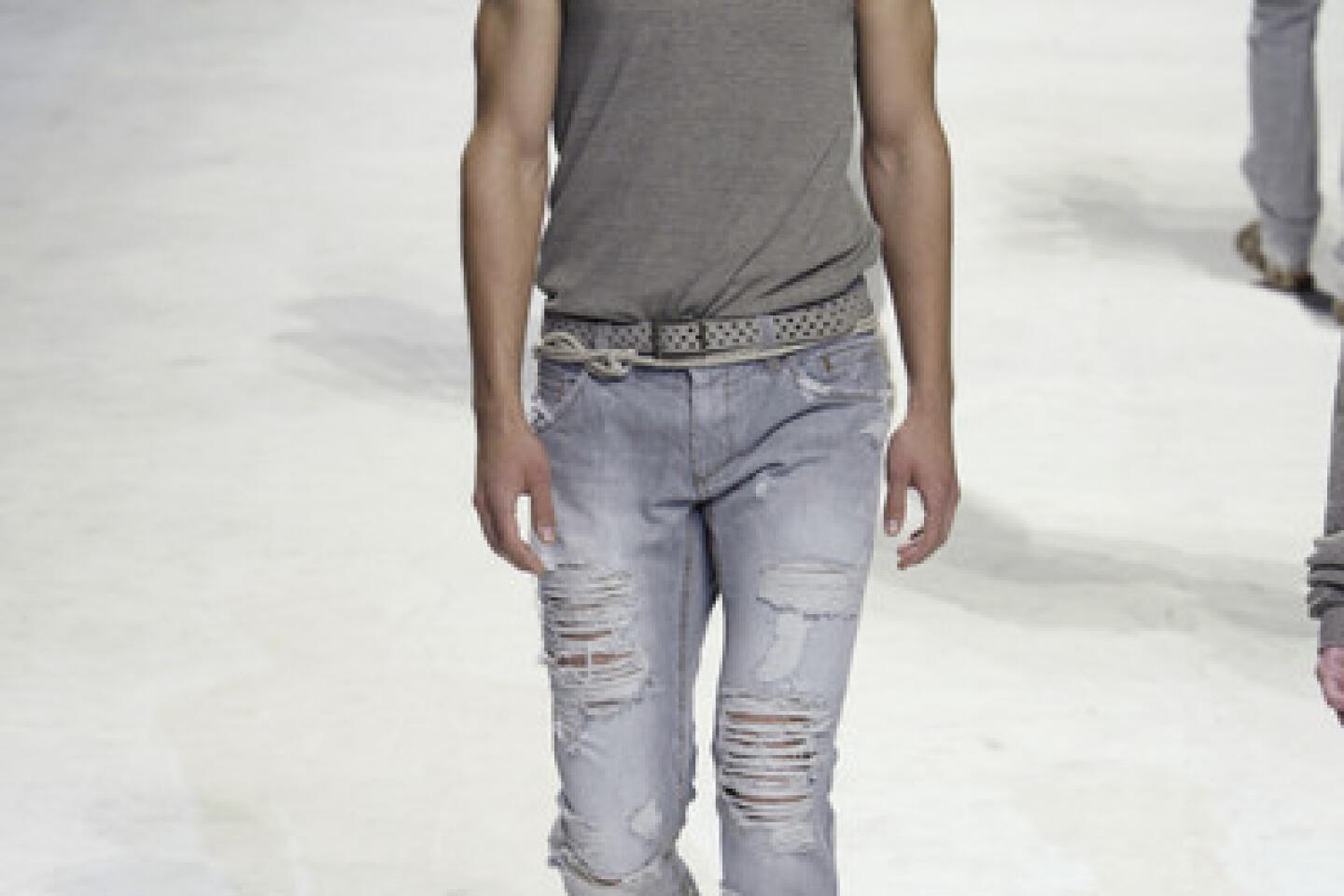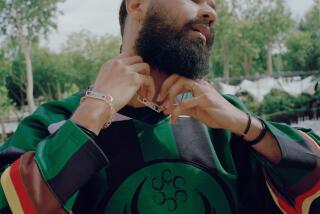Stefano Gabbana talks about Dolce & Gabbana
Reporting from Milan, Italy — Designers Domenico Dolce and Stefano Gabbana were the toast of the town during last month’s men’s fashion week in Milan. It wasn’t just because of their 20th anniversary menswear show, which included Morgan Freeman in the audience and Annie Lennox at the piano — it was the star-studded red carpet gala that followed later that evening and a three-day public exhibit at Palazzo Marino (Milan’s city hall) that featured rows of gleaming Apple iPads, flickering TV sets and the tools of the tailoring trade that once belonged in the atelier of Dolce’s father.
Three days later, the Gabbana half of the design duo shared some of his thoughts on what’s changed since they sent their first menswear collection down the runway in January 1990, five years after launching as a women’s line. Sitting in the company’s Via San Damiano headquarters in Milan, on a red velvet couch the size of an automobile, surrounded by a sea of leopard-print wallpaper and curtains and flanked by autographed photos of Nicole Kidman and framed Madonna album covers, Gabbana spoke of slim white shirts, David Beckham and Twitter.
Question: Do you take any time off between working on the men’s collections and the women’s collections?
Answer: Tomorrow we go to Moscow for a party celebrating the D&G store opening. After we come back from Moscow, I’ll take about three days off, then it’s right into the women’s. I prefer it that way because of the adrenaline. We will work until the end of July and then take the month of August off.
Q: When it comes to inspiration and design, are the men’s and women’s collections conceived of together?
A: The collections are completely different, but sometimes the moods will be similar. And since the men’s show is at the end of June, we have all of July, August and September to further develop and change the idea, to try different things [for the women’s collection].
Q: How did the men’s side of the Dolce & Gabbana label come about in the first place?
A: We decided to make men’s because we had a hard time finding clothes we could wear. At the time we wore Japanese designers like Comme des Garçons and Yohji Yamamoto, but I couldn’t find white shirts that were just a little bit slim, and unconstructed jackets without shoulder [pads], so we started to make them ourselves. And when our friends started asking about the clothes and where we got them, we decided to start doing a men’s collection.
Q: What has changed the most since that first menswear collection hit the runway in January 1990?
A: It has totally changed — the roots are the same and the taste is the same, but that was 20 years ago.
Men used to have these Superman bodies when we started — like bodybuilders. Proportions have changed, and men’s bodies are sporty but not built like they were before. People are healthier and more body conscious. Even the black suit has changed because it’s more slim now — but at least the tank top hasn’t changed!
Q: Dolce & Gabbana has always been able to leverage celebrity. Over the years, who has had the biggest effect on your menswear business?
A: Things really started to change in men’s when we started to work occasionally with David Beckham. He was the channel we needed to speak to men. Here was a soccer player who is straight, with a wife and children, and men were saying: “If he wore it, I can wear it too.” Before that it felt like men’s fashion was just for gay men or strange people — men were afraid to wear something special.
Q: How did Annie Lennox become involved in your 20th anniversary menswear show?
A: Making a fashion show is difficult, because you aren’t just presenting a new collection, you’re trying to make an emotional connection. The customer needs that. We were reminded of that about a year ago. So when we started working on this collection, we wanted something that would be quiet, almost relaxing, but powerful at the same time. And that made us think of Annie Lennox. We didn’t think she would do it, but we asked her and she said yes.
Q: What happened a year ago that made you rethink how you connect with the customer?
A: This was about the women’s not the men’s, but we received an anonymous letter from a customer that said: ‘“Where are Dolce and Gabbana, and why don’t you make the real Dolce & Gabbana [label] anymore?” That was kind of a shock because we were so focused on always looking for the new, we left the rest behind. So this was a real moment for us to stop and look back at who we are and to focus more on the customer and not the trend. Right now we don’t care about trends.
Q: You were some of the earlier designers to embrace the blog culture and social networking. Why?
A: Two years ago, we were the first to invite bloggers to sit in the front row at our shows. We understand what people want — it’s another point of view and it’s democratic information. Now we also post short videos to YouTube right before we show a collection, because that is our chance to speak directly to the consumer. It is our point of view, just like the newspaper or magazine is the point of view of the journalist. There is room for all of it.
Q: And now you use Twitter, right?
A: Yes, sometimes I’ll use Twitter to ask whether people prefer black or white, corset or no corset. Two months ago, I took a picture of a flower and some said: “Why don’t you use that on a fabric?”
Q: Do people know it’s actually you?
A: Yes, but sometimes they’ll ask: “Is it really you?” We have a separate account for Dolce & Gabbana PR, @stefanogabbana is my own, and I don’t just talk about work, I talk about my dog, my dinner, my friends, the sunset. I love to work between technology and tradition. If you find the balance, it’s interesting. You don’t want to lose the tradition but you don’t want to ignore the new.
Later, Dolce, co-founder and partner in the Dolce & Gabbana brand, responded through his publicist about the importance of including items from his father’s atelier in the 20th anniversary exhibit in Milan.
Domenico Dolce [via e-mail]: That’s my father’s certificate from the Palermo tailor school, which my father attended and graduated from in the early 1930s. The Milan exhibit also featured the mirror of my father’s atelier. I am very attached to both, I learned from my father the art of tailoring. I grew up among fabrics and patterns, and at age 7 I was already able to make a pair of trousers. … At Palazzo Marino, the tailor’s installation, in contrast with the technology of the other rooms, is a way to say thank you to what tradition and roots represent and have represented for me. I do not forget roots and that certificate is maybe the symbol. I am very attached to it and I keep it in my personal atelier; where I do the initial fittings for the collection.
